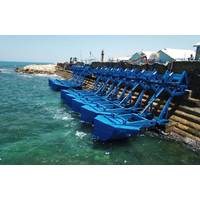
Israeli Firm Gets Final Permit for US Wave Energy Demo
Port of Los Angeles was executed on behalf of the Executive Director, Eugene D. Seroka on March 27, 2025.This permit is the final approval required for Eco Wave Power to start construction of its pilot project, following it receiving a federal Nationwide Permit (NWP) 52 for Water-Based Renewable Energy Generation Pilot Projects granted by the U.S. Army Corps of Engineers in November 2024.With all necessary permits secured, the company is set to move forward with implementation, which is expected to be completed within two or three months.The pilot project, co-funded by Shell Marine Renewable Energy

Subsea Expo 2025 Theme Announced and Conference Programme Confirmed
;Deep in Transition’, echoes the journey the underwater industry is undertaking as part of the energy transition, while growing the blue economy and supporting the global drive to net-zero. Following a year of political change, the theme mirrors a world in the midst of transition in terms of energy generation and consumption, and how the power of the oceans and seas can be sustainably harnessed to support a growing population. It also acknowledges moves to enhance and protect global communication channels and efforts to combat climate change.Proceedings at Subsea Expo will open on the Tuesday
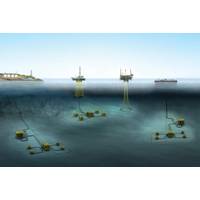
Subsea Digitalization: Remote Control
the remote control of such assets during the operational phase. The resulting reduction in project cycle time and costs and the ability to produce previously inaccessible reserves can redefine an asset’s net present value for the better.”All-electric systems are well suited to local energy generation and storage which can be an additional enabler to project viability. Also, electrification leads to reduction of surface infrastructure at the host facility, coupled with the reduction of hydraulics eliminating hydraulic power units and large topside reservoir.In the future the integration
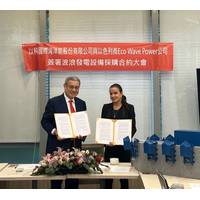
Eco Wave Power Sells Wave Energy Unit for Taiwanese Pilot Project
Eco Wave Power has signed an agreement for the sale of the first wave energy generation unit with I-Ke International Ocean Energy, a subsidiary of maritime engineering company Lian Tat, for the pilot wave energy plant in Taiwan.According to the terms of the agreement, I-Ke will be providing the full financing for the 100 kW pilot project, by buying a turnkey conversion unit from Eco Wave Power. This conversion unit for the 100 kW wave energy power station includes all the hydraulic and electric conversion parts, coupled with the smart control and automation system.I-Ke has identified the location for

SubCtech, Mocean Energy Team Up for Zero-Carbon Solution for Subsea Applications
becoming increasingly important for various offshore activities. With a partner like Mocean Energy, the enormous potential of wave energy can be utilized. Both companies have successfully already tested larger systems in-situ. For customers, this means a reliable energy supply from a single source: energy generation and storage provided wit
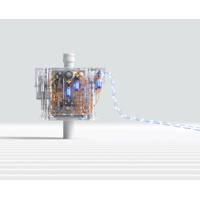
New Project Marks Tipping Point for Subsea Electrification
the remote control of such assets during the operational phase. The resulting reduction in project cycle time and costs and the ability to produce previously inaccessible reserves can redefine an asset’s net present value for the better.”All-electric systems are well suited to local energy generation and storage which can be an additional enabler to project viability. Also, electrification leads to reduction of surface infrastructure at the host facility, coupled with the reduction of hydraulics eliminating hydraulic power units and large topside reservoir.In the future the integration

OPT’s Wave-Powered Tech Nears 15MWh of Renewable Energy Production
production from its family of PowerBuoys, which primarily exploit wave energy to generate power.The recent launch of its next generation PowerBuoy off the coast of New Jersey has materially accelerated average energy production by combining solar, wind, and wave energy production capabilities.The energy generation numbers are based on deployments in the Atlantic, Pacific, Mediterranean, and North Sea.These deployments came from a mix of renewable energy investments from government backed development programs and commercial leases and sales, for customers including Eni, EGP, Office of Naval Research and
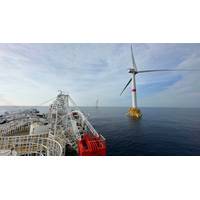
Asso.subsea Wraps Up Subsea Cables Installation at French Floating Wind Pilot
floating wind farm developed by EDF Renewables and its partners. During the last three years, we have worked meticulously performing very detailed engineering analyses as a testament to our commitment to innovation and sustainability.“By contributing to EU and national targets for renewable energy generation and greenhouse gas emission reduction, this accomplishment reaffirms our company’s steadfast commitment to facilitating the green transition,” said Dimitris Panagos, Director of Offshore Wind at Asso.subsea
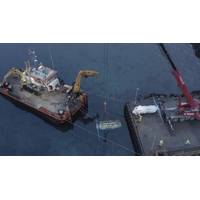
EnFAIT Horizon 2020: Tidal Turbine Costs Cut 40%
new 100kW direct-drive turbines and a subsea hub alongside the three existing turbines in the Shetland Tidal Array. For the first time, wake effects between turbines in a real world environment were analysed to identify the optimum spacing between turbines in an array, and the effect this has on energy generation. The data collected has helped to calibrate computer modelling that will be invaluable for future tidal energy projects.Simon Forrest, CEO of Nova Innovation, added: “EnFAIT has been an incredibly successful project. We have reduced costs by 40%, doubled the size of the world’s


 February 2025
February 2025





